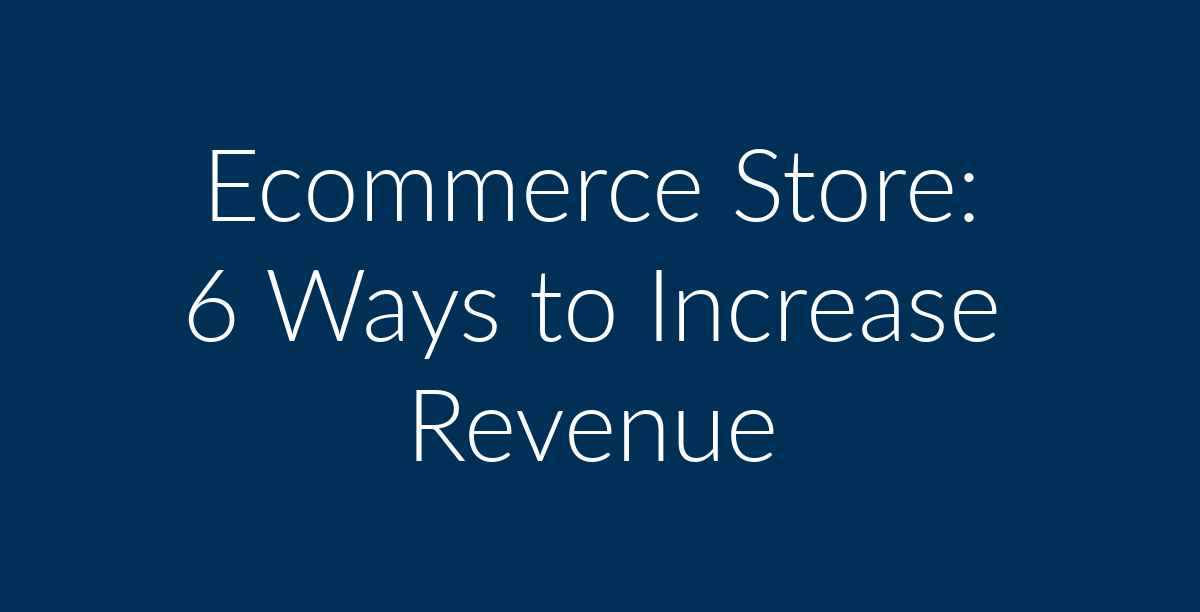You may have lately considered launching your own ecommerce business, thanks to companies like Shopify that make it simple for anyone to do so. After all, if you want to generate money online, opening an ecommerce site is typically a good place to start.
So, you’ve just launched a fantastic ecommerce store. You’ve chosen hot things, designed a fantastic website, and are ready for the sales to start pouring in. However, your outcomes thus far have been disappointing. Setting up an ecommerce store is simply the first step in creating a successful ecommerce business; now you must develop a long-term strategy to boost ecommerce sales.
To put things into perspective, setting up a store isn’t enough to produce revenue. You must understand how to advertise your shop in order to generate sales. It’s maybe as tough as you would believe to increase ecommerce sales. It doesn’t need you exhausting yourself in the process. Most of the time, it’s a collection of tiny tactics working in tandem to assist you meet your income targets. That is why most businesses hire marketing consultants to help them drive sales and revenue. Here are some strategies they use for the same.
#1 Implement Email Marketing
Step 1: Build an email marketing list.
Step 2: Make it an integral part of your marketing campaign.
You might opt to send each subscriber the same weekly email, but this isn’t the ideal method to get the most out of your list because the material won’t be as relevant to everyone. Rather, categorize your audience based on their behaviors – what things have they bought from you? When it comes to getting email marketing from you, what are their preferences?
You may use your email list provider to perform these personalizations and more. You might, for example, provide checkbox choices when asking visitors to confirm their membership to obtain an understanding of:
- The product category in which they are interested
- What kinds of promotions do people like to hear about?
- How did they find out about your store?
#2 Let Go of the Products Pulling You Down
Realizing that not all of your items are in equal demand or merit equal shelf space may be a hard reality for a business owner. The Pareto principle, sometimes known as the 80/20 principle, is one of the most successful business secrets. 20% of your efforts and 20% of your items are responsible for 80% of your company success and 80% of your revenue. The theory holds true even if the percentages aren’t perfect.
With fewer goods, you’ll save money on inventory, have a more streamlined display page with more room for each product, and dedicate more marketing time and money to your greatest sellers. Customers will be less likely to become paralysed by choice paralysis if there are fewer goods available. The well-known Jam Experiment provides proof of this. When clients were given the option of choosing between 6 jams and 24 jams, the former received 30% of the sales, while the latter received only 3%.
So, this is how you can brave it out:
- Determine the top 20% of your profits or profit-making goods and concentrate all of your efforts on them. Get rid of any goods that aren’t working.
- Ensure that you never run out of the greatest items.
- Display them prominently to make the purchasing process easier.
- The majority of your purchases will be driven by 20% of your clients. Find them and hold on to them.
- Remove the other 80% of the goods that aren’t working. Spend your money on what’s working.
#3 Focus on Building a Loyal Customer Base
eCommerce companies have an obsessive concern with acquiring new consumers and expanding their user base. The average eCommerce business spends more than 80% of its online expenditure on client acquisition. According to research, acquiring new consumers costs 5 times more than keeping old ones, and the chance of selling to new clients is 5-20 percent compared to 60-70 percent for current customers.
Couldn’t that 80 percent be put to greater use now that you know this?
Each time a consumer buys from you, their chances of becoming a repeat customer grow. They are more inclined to buy again if they have purchased previously. After 30 months of purchasing with a firm, repeat clients spend 67 percent more each purchase. During festivals, events, Christmas, and the holiday season, they spend more. Finally, repeat consumers are your most powerful brand ambassadors. As they purchase more from you, they will feel more confident in suggesting you to their friends.
#4 Give Attention to UX and UI
One aspect of the difficulty is getting customers to visit your website. The next step is to convert them. Simply said, the Conversion Rate refers to the percentage of people that visit your business and make a purchase. In 2021, the average conversion rate for eCommerce retailers was 2.27 percent. This suggests that just two clients out of every hundred visits made a transaction.
You’ll get more bang for your dollars from online advertisements if you use a CRO approach. For instance, if a PPC ad costs $15 and your conversion rate is 2%, you’ll need to spend $1500 to get two purchases. It simply does not function if your average order value (AOV) is low. You’re squandering your funds. So, how can you increase your Average Order Value and CRO as an eCommerce company owner?
Upselling! It has been demonstrated to drive an average of over 4% sales for eCommerce firms, according to study. It is one of Amazon’s primary marketing methods. Personalization and time are essential for upselling to work. Allow clients to try the goods first and pick or indicate their preferences. Then show them items that are similar or complementary and have greater margins or pricing.
#5 Optimize Effectively Using SEO Plugins
Your organic traffic will grow if you optimize your ecommerce business for search engines, especially if you rank on the top page of Google for a certain phrase. Who doesn’t appreciate free traffic?
I understand if the mention of SEO makes you want to flee. SEO is a beast in and of itself. However, SEO for ecommerce sites isn’t all that time-consuming, and you may save time by using one of numerous terrific plugins. Some are charged, while others are free, but in the end, these plugins are typically reasonable and will deliver a good return on investment if they are used to their full potential.
#6 Integrate Social Media
Have you heard about Instagram’s Shoppable Posts? If your business is in one of Instagram’s supported markets and follows their commerce standards, you may link straight to your ecommerce store from your Instagram Business page.
Instagram gives a wide-open window of sales prospects, with a monthly active user base of 1 billion individuals (and 500 million daily users, what?). This is particularly true if your store’s visual identity is impeccable. You may utilize tempting product photographs to grab the attention of your Instagram followers, then link back to a product page on your site.
Another option is to directly link your Instagram feed into your ecommerce site. This will encourage your visitors to participate on social media.
Final Words
An entrepreneur’s voyage, like that of an explorer seeking to construct his own future, may be difficult and often unproductive. To improve your chances of success, seek advice and knowledge from those who have gone through similar experiences. Use the methods and ideas listed above to help you improve ecommerce sales and keep your business expanding so you can prosper.
It’s not enough to be good at one thing to be relevant in today’s competitive world; you need to be good at everything. Marketing, logistics, inventory, content, website design, and other functions and processes should all be tested and optimized on a regular basis. While this is a demanding task, the benefits of internet business are well worth it.



